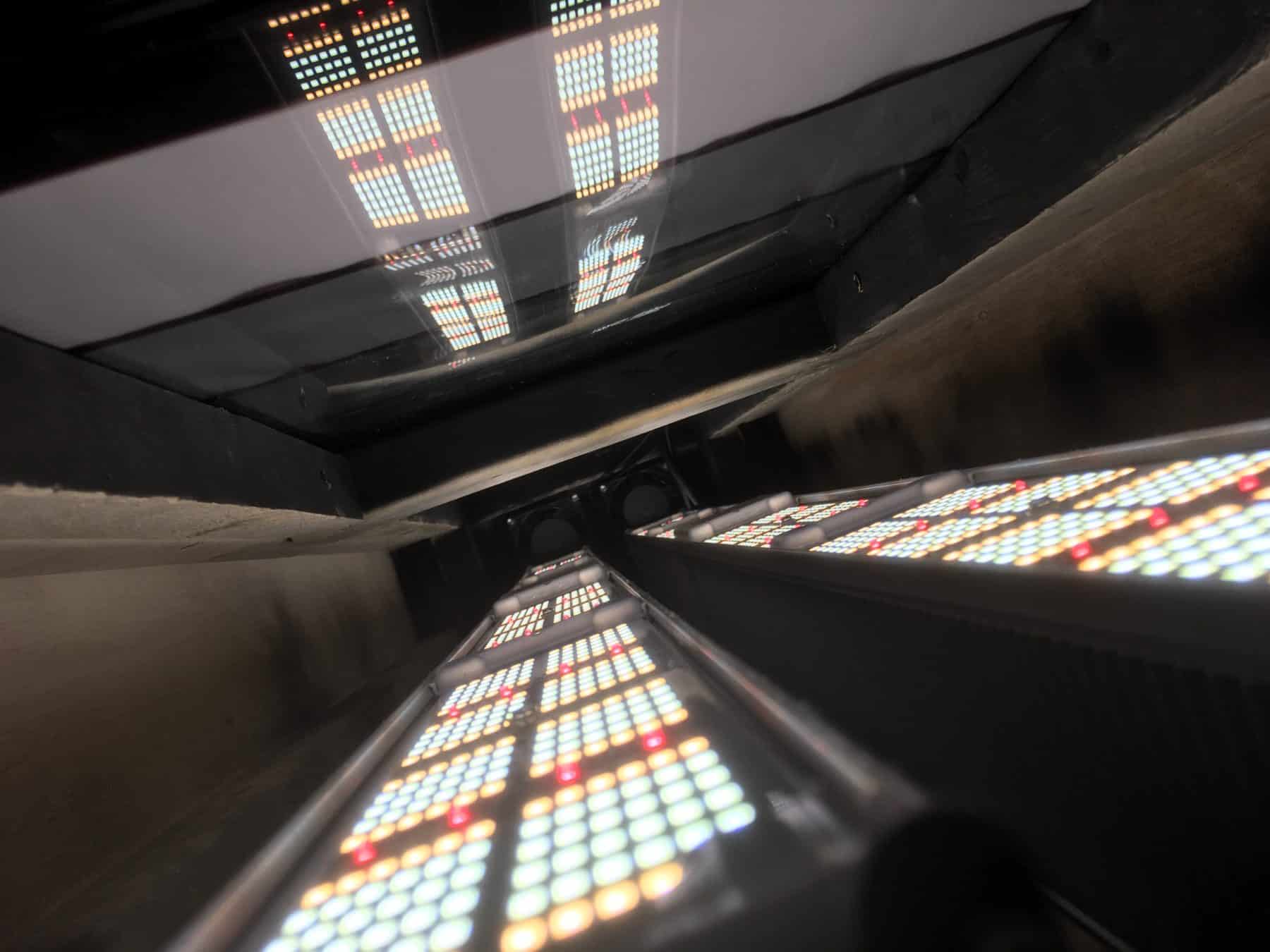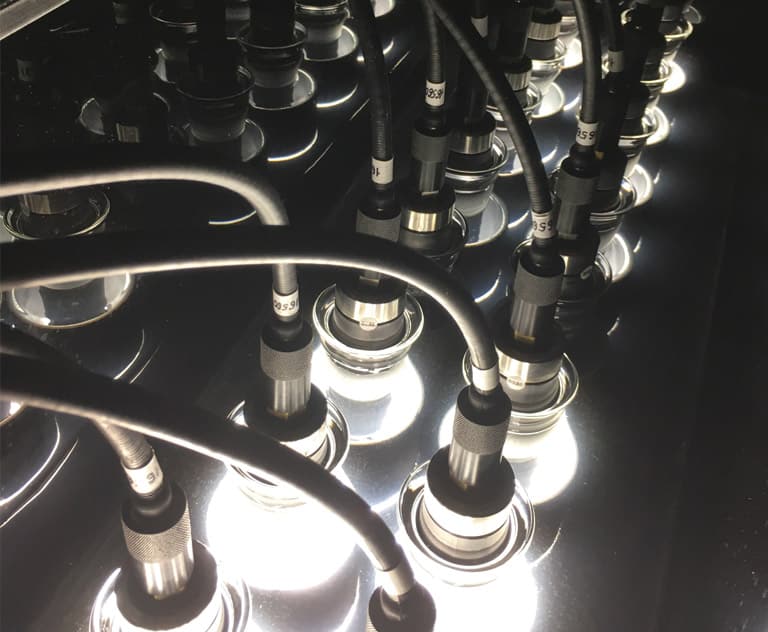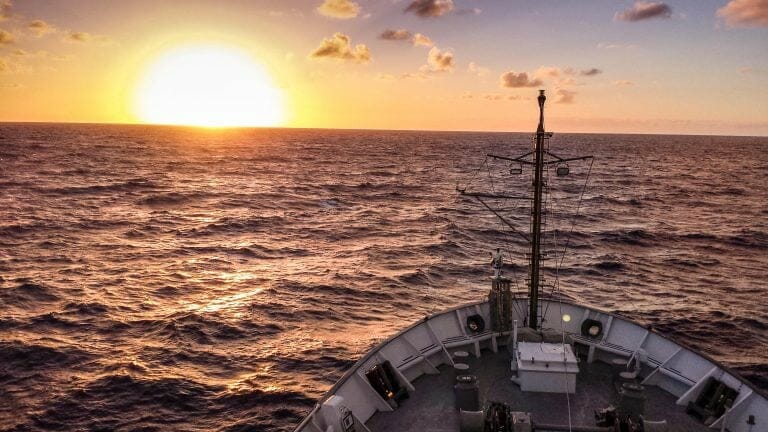
21 Feb NASA Scientists Deploy Fluence-Powered Photosynthetron to Improve Understanding of Climate Change
Somewhere in the middle of the Pacific Ocean on board the RV Falkor, NASA Senior Research Scientist Ryan Vandermeulen is investigating the rates of biological activity among microbial communities in the ocean with a new adaptation to an instrument called a photosynthetron. The photosynthetron is an incubation chamber used to study and measure the balance of phytoplankton oxygen/carbon exchange.
At the heart of this new instrument are two Fluence VYPRx PLUS LED systems emitting a broad spectrum with a photosynthetic photon flux density (PPFD) capable of reaching >4,000 μmol/m2/s. Designed to simulate naturally available light conditions at different times of day and different depths within the ocean, the custom designed photosynthetron is a one-of-a-kind research tool used to measure the biological activity of microscopic plankton, which is paired with subsequent measurements of the composition (types) of plankton, as well as the optical properties (absorption and scattering) of seawater samples.

Photo Credit: Schmidt Ocean Institute
The photosynthetron is being used during the Schmidt Ocean Institute “Sea to Space Particle Investigation” expedition which is an ongoing study to improve our understanding of how Earth’s living marine resources and carbon sequestration are responding to rising carbon dioxide levels as well as climate changes. The photosynthetron (in addition to a host of new instruments developed in conjunction with this expedition) will allow an unprecedented view into the biological, physical, and chemical mechanisms of the ocean.

Photo Credit: Schmidt Ocean Institute
“By understanding more about the link between biological activity that I’m measuring in the lab, the types of phytoplankton in the water, and how this changes the color of the ocean, we can refine how we monitor these processes from space, and thus increase our understanding of carbon cycle dynamics on a global scale. Innovation, technology and support from companies like Fluence Bioengineering are helping enable our exploration of Earth by creating tools that help us simulate a variety of real-life environments in the laboratory. When we apply this information to space-borne sensors, we are literally able to monitor the activity of microscopic organisms that are too small to see with the naked eye with a telescope orbiting our planet at over 15,000 mph to study their response to climate change.”
-Ryan Vandermeulen, Senior Research Scientist,
NASA Goddard Space Flight Center, Ocean Ecology Laboratory
To learn more about the Sea the Space Particle Investigation, visit: https://schmidtocean.org/cruise/sea-space-particle-investigation/


